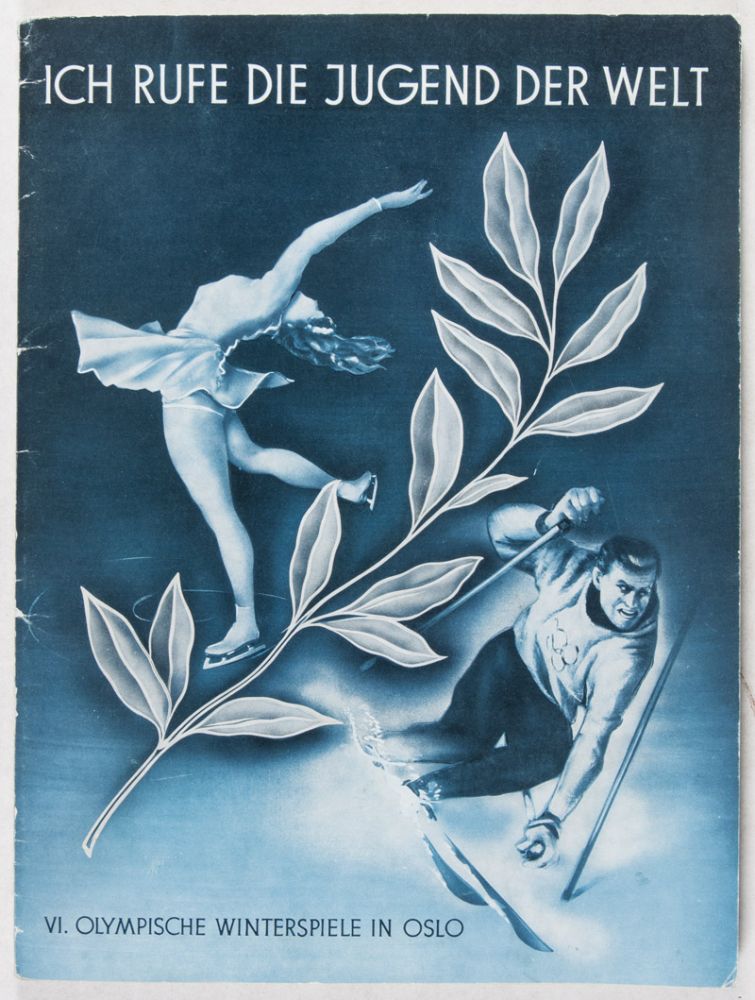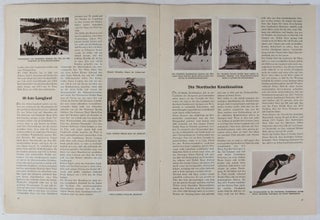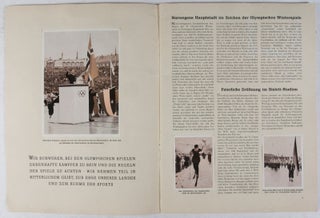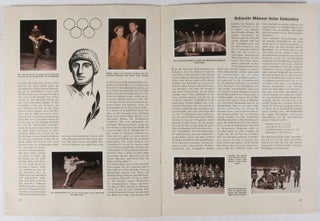Ich rufe die Jugend der Welt: VI. Olympische Winterspiele in Oslo. Ein Sammelwerk für die Leser und Freunde der Fränkischen Presse
Bayreuth: Julius Steeger & Co., 1952. First edition. Softcover. Folio. 28pp. Original illustrated wrappers. Published as part of an advertising campaign for the "readers and friends of the Franconian press," this photo-album is documenting in 69 striking duo-tone photographs, the athletes and the most memorable moments of the 1952 Oslo Winter Games known as the VIth Olympiad.* Each of the 69 photographs is pasted, of which 67 measure appr. 3 1/8 x 2 3/8", and 2 measure appr. 6 2/8 x 4 1/2". Some creasing to spine. Text in German. Wrappers in overall good, interior in good+ to very good condition. g to vg. Item #38997
* The 1952 Winter Olympics, officially known as the VI Olympic Winter Games, took place in Oslo, Norway, from 14 to 25 February. Discussions about Oslo hosting the Winter Olympic Games began as early as 1935; the city wanted to host the 1948 Games, but World War II made that impossible. Instead, Oslo won the right to host the 1952 Games in a contest that included Cortina d'Ampezzo in Italy and Lake Placid in the United States. All of the venues were in Oslo's metropolitan area except for the alpine skiing events, which were held at Norefjell, 70 miles (113 km) from the capital. A new hotel was built for the press and dignitaries, along with three dormitories to house athletes and coaches, creating the first modern athlete's village. The city of Oslo bore the financial burden of hosting the Games in return for the revenue they generated. The Games attracted 694 athletes representing 30 countries, who participated in four sports and 22 events. Japan and Germany made their returns to winter Olympic competition, after being forced to miss the 1948 Games in the aftermath of World War II. Germany was represented solely by West German athletes because East Germany declined to compete as a unified team. Portugal and New Zealand made their Winter Olympic debuts, and for the first time women were allowed to compete in cross-country skiing. Norwegian truck driver Hjalmar Andersen won three out of four speed skating events to become the most decorated athlete at the Games. Germany resumed its former prominence in bobsleigh, with wins in the four- and two-man events. Dick Button of the United States performed the first triple jump in international competition to claim his second consecutive men's figure skating Olympic title. The 1952 Games featured one demonstration sport, bandy, but only three Nordic countries competed in the tournament. Norway dominated the overall medal count with 16 medals, seven of them gold. The Games closed with the presentation of a flag that would be passed from one Winter Olympics host city to the next. The flag, which became known as the "Oslo flag", has been displayed in the host city during each subsequent Winter Games.
Price: $450.00




